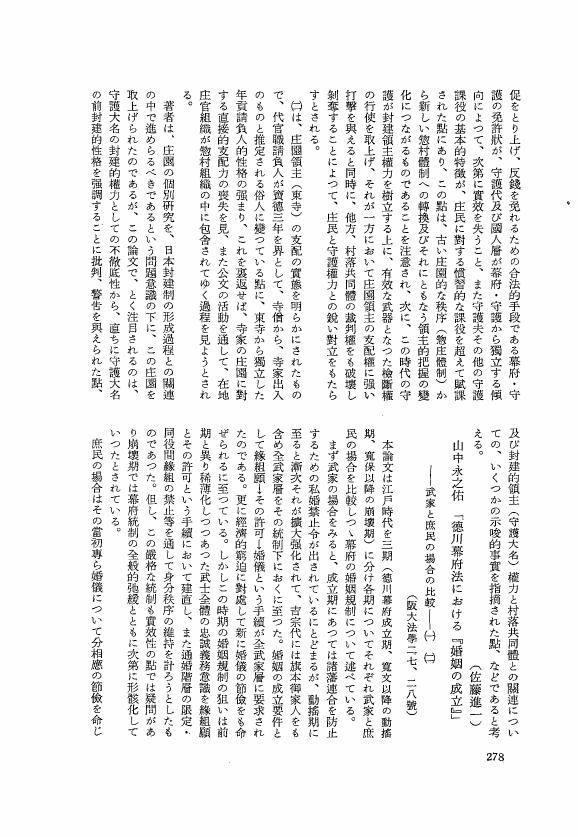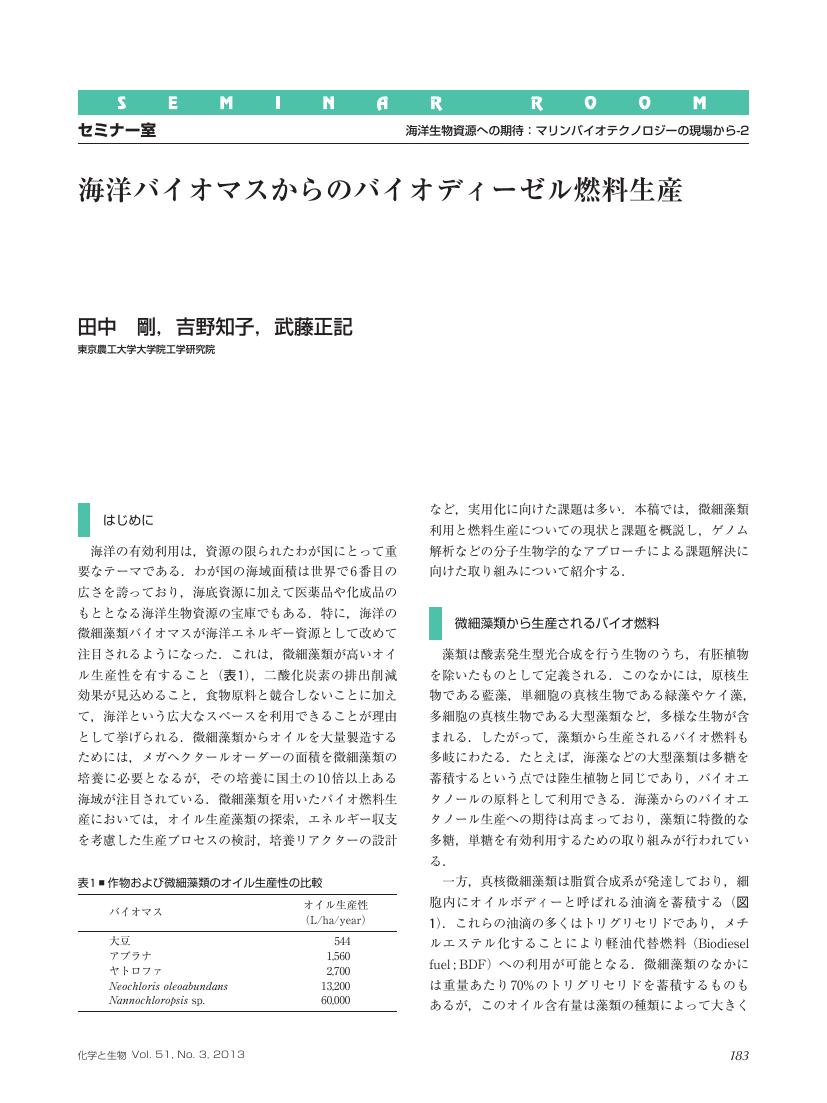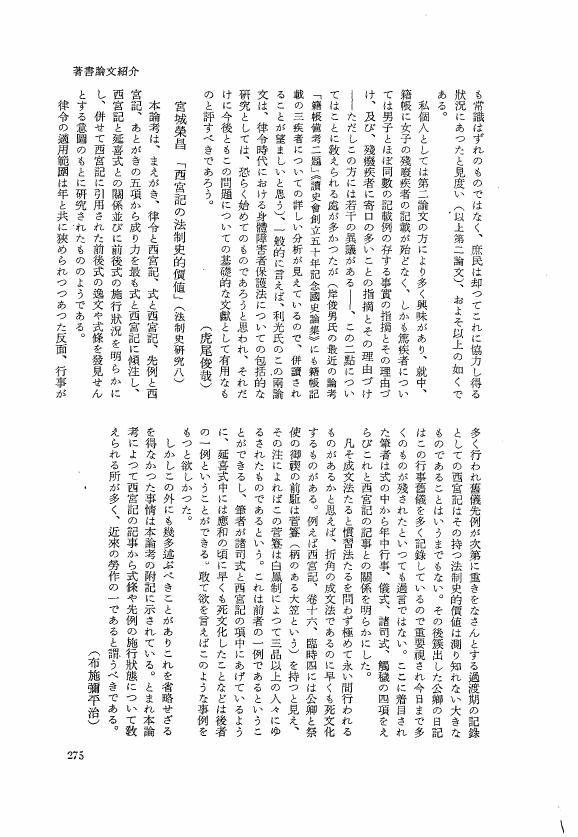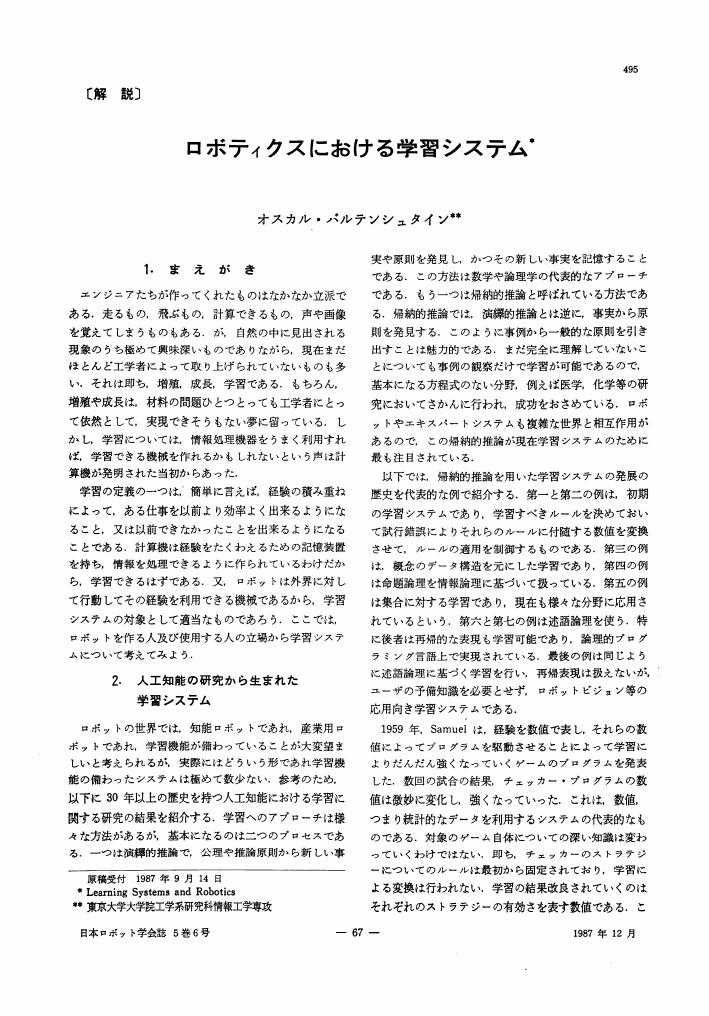- 著者
- 竹村 一男
- 出版者
- 公益社団法人 日本地理学会
- 雑誌
- 地理学評論 Ser. A (ISSN:00167444)
- 巻号頁・発行日
- vol.73, no.3, pp.182-198, 2000-03-01 (Released:2008-12-25)
- 参考文献数
- 41
- 被引用文献数
- 2
本稿では,末日聖徒イエス・キリスト教会の受容と定着の様相の地域的差異について山形・富山地域を中心に考察した.富山地域においては教会員の生家の檀家宗派は浄土系宗派が多く,禅系仏教地域の山形県米沢地域においても同様な傾向がみられた.浄土系宗派の寺院分布が卓越している富山・魚津地域においては布教が難しいが,教会員の定着率は高い.山形県と富山県の受容形態を比較すると,山形・米沢地域においては宗教体験を経て教会員となる場合が多いが,富山地域においては論理的に教義を解釈して教会員となる場合が多い傾向がある.これらの理由として,地域の基層宗教の大枠を構成する仏教では,宗派によって,住民の宗教観に影響を与える教義や地域社会への浸透度が異なるためと考えられる.とくに,浄土真宗地域における末日聖徒イエス・キリスト教会の定着率の高さは,浄土真宗と末日聖徒イエス・キリスト教会を含むキリスト教が教義構造において類似性を持つためと考えた.なお,両地域において教会員の属性には大きな偏りはみられない.1990年代に入り,同教会においては布教の手法と受容に至る過程に分散化・多様化が進んでいる.
1 0 0 0 OA (書評)石井良助著「続江戸時代漫筆」
- 著者
- 前田 正治
- 出版者
- 法制史学会
- 雑誌
- 法制史研究 (ISSN:04412508)
- 巻号頁・発行日
- vol.1963, no.13, pp.255-257, 1963-03-30 (Released:2009-11-16)
1 0 0 0 OA ハレー彗星の撮影
- 著者
- 監物 邦男
- 出版者
- 一般社団法人 日本写真測量学会
- 雑誌
- 写真測量とリモートセンシング (ISSN:02855844)
- 巻号頁・発行日
- vol.25, no.3, pp.42-44, 1986-08-30 (Released:2010-03-19)
- 著者
- 八重津 洋平
- 出版者
- 法制史学会
- 雑誌
- 法制史研究 (ISSN:04412508)
- 巻号頁・発行日
- vol.1967, no.17, pp.238-239, 1967-10-20 (Released:2009-11-16)
- 著者
- 鎌田 浩
- 出版者
- 法制史学会
- 雑誌
- 法制史研究 (ISSN:04412508)
- 巻号頁・発行日
- vol.1960, no.10, pp.278-279, 1960-03-30 (Released:2009-11-16)
1 0 0 0 OA 資料館紹介シリーズ 関西特許情報センター
- 著者
- 三谷 久子
- 出版者
- 日本薬学図書館協議会
- 雑誌
- 薬学図書館 (ISSN:03862062)
- 巻号頁・発行日
- vol.43, no.3, pp.295-298, 1998-07-31 (Released:2011-09-21)
1 0 0 0 OA テーマ別研究動向 (リスク)
- 著者
- 阪口 祐介
- 出版者
- 日本社会学会
- 雑誌
- 社会学評論 (ISSN:00215414)
- 巻号頁・発行日
- vol.63, no.4, pp.602-609, 2013-03-31 (Released:2014-03-31)
- 参考文献数
- 20
1 0 0 0 OA Development of prediction technology of two-phase flow dynamics under earthquake acceleration
- 著者
- Hiroyuki YOSHIDA Taku NAGATAKE Kazuyuki TAKASE Akiko KANEKO Hideaki MONJI Yutaka ABE
- 出版者
- 一般社団法人日本機械学会
- 雑誌
- Mechanical Engineering Journal (ISSN:21879745)
- 巻号頁・発行日
- vol.1, no.4, pp.TEP0025-TEP0025, 2014 (Released:2014-08-15)
- 参考文献数
- 10
- 被引用文献数
- 1 1
In this study, to develop the predictive technology of two-phase flow dynamics under earthquake acceleration, a detailed two-phase flow simulation code with an advanced interface tracking method TPFIT was expanded to perform two-phase flow simulations under seismic conditions. In the expansion of the TPFIT, the oscillating acceleration attributed to the earthquake motion was introduced into the momentum equation of the two-phase flow as body force. Moreover, to simulate fluctuation of the flow rate and a shear force on a pipe wall, time dependent boundary conditions can be added in the numerical simulations. The bubbly flow in a horizontal pipe excited by oscillation acceleration and under the fluctuation of the liquid flow was simulated by using the modified TPFIT. Furthermore, predicted velocity distribution around the bubbles and shapes of bubbles were compared with measured results under flow rate fluctuation and structure vibration. In the results of numerical simulation, periodical change of shapes of bubbles was observed. In addition, velocity distribution around bubbles also changed in accordance with flow rate fluctuation or structure vibration. Predicted results almost agreed with measured results. In the results, it was confirmed that the modified TPFIT can predict time dependent velocity distribution around the bubbles and shapes of bubbles qualitatively. The main cause of bubble deformation observed from the measured and predicted results is large shear stress at the lower part of the bubble, and this large shear stress is induced by the velocity difference between the liquid phase and bubble. Moreover, by using the predicted results, we discussed about the difference between both effects of flow rate fluctuation and structure vibration on two-phase flow. In the results, bubble acceleration of the structure vibration case was larger than that of the flow rate fluctuation case. Finally, it was concluded that unsteady shear stress induced by vibration of the pipe wall was one of the main driving forces of bubble motion in structure vibration case.
1 0 0 0 OA 歯周病患者におけるインプラント治療(2)
- 著者
- 長谷川 嘉昭
- 出版者
- 特定非営利活動法人 日本歯周病学会
- 雑誌
- 日本歯周病学会会誌 (ISSN:03850110)
- 巻号頁・発行日
- vol.55, no.4, pp.371-374, 2014-03-28 (Released:2014-04-10)
- 参考文献数
- 5
1 0 0 0 OA 橋梁基礎下砂礫地盤内の地震時ひずみ
- 著者
- 山田 勝彦 龍岡 文夫 真鍋 進
- 出版者
- 公益社団法人 土木学会
- 雑誌
- 地震工学研究発表会講演概要 (ISSN:09134085)
- 巻号頁・発行日
- vol.20, pp.317-320, 1989 (Released:2010-06-15)
- 参考文献数
- 5
- 著者
- Gerard B. Remijn Emi Hasuo Haruna Fujihira Satoshi Morimoto
- 出版者
- 一般社団法人 日本音響学会
- 雑誌
- Acoustical Science and Technology (ISSN:13463969)
- 巻号頁・発行日
- vol.35, no.5, pp.229-242, 2014-05-01 (Released:2014-09-01)
- 参考文献数
- 109
- 被引用文献数
- 11
In 1939, Pauline Davis reported the first study on event-related potentials (ERPs) performed on awake humans. ERPs are time-locked brain potentials that occur in response to cognitive, motor or perceptual events. The events used by Davis were sounds, and in the decades that followed her landmark study ERP research significantly contributed to the knowledge of auditory perception and neurophysiology we have today. ERPs are very well suited to study neural responses to sound stimuli, since the researcher can monitor the brain's registration of sound edges and spectral changes in sound on a millisecond-by-millisecond basis. In this overview we will introduce basic concepts of auditory ERP research. The overview includes descriptions of typical ERP components, experimental paradigms, sound stimuli, research methodology, and ways to analyze data.
1 0 0 0 OA 畜産2
- 著者
- 小栗 克之
- 出版者
- 農業食料工学会
- 雑誌
- 農業機械学会誌 (ISSN:02852543)
- 巻号頁・発行日
- vol.51, no.2, pp.131-134, 1989 (Released:2010-04-30)
1 0 0 0 OA 医用画像と応用人工知能
- 著者
- 鳥脇 純一郎
- 出版者
- 一般社団法人 日本生体医工学会
- 雑誌
- BME (ISSN:09137556)
- 巻号頁・発行日
- vol.7, no.5, pp.17-27, 1993-05-10 (Released:2011-09-21)
- 参考文献数
- 53
1 0 0 0 OA 大学は特許制度と特許情報にもっと関心を
- 著者
- 中村 友之
- 出版者
- 農業食料工学会
- 雑誌
- 農業機械学会誌 (ISSN:02852543)
- 巻号頁・発行日
- vol.46, no.2, pp.261-263, 1984 (Released:2010-04-30)
1 0 0 0 OA 海洋バイオマスからのバイオディーゼル燃料生産
- 著者
- 田中 剛 吉野 知子 武藤 正記
- 出版者
- 公益社団法人 日本農芸化学会
- 雑誌
- 化学と生物 (ISSN:0453073X)
- 巻号頁・発行日
- vol.51, no.3, pp.183-188, 2013-03-01 (Released:2014-03-01)
- 参考文献数
- 20
- 著者
- Naoko NAMIZAKI Hiroya YAMANO Rintaro SUZUKI Kenji OOHORI Hitoshi ONAGA Tamiko KISHIMOTO Teppei SAGAWA Yoshiko MACHIDA Shigeki YASUMURA Takanori SATOH Takashi SHIGIYA Tsuyoshi SHIBATA Megumu TSUCHIKAWA Yasuaki MIYAMOTO Kyoko HARUKAWA Koichi HIRATE Koji FURUSE Kenichi HOKOYAMA Yasushi YAMANAKA Toru WAGATSUMA
- 出版者
- 日本サンゴ礁学会
- 雑誌
- Galaxea, Journal of Coral Reef Studies (ISSN:18830838)
- 巻号頁・発行日
- vol.15, no.Supplement, pp.391-395, 2013 (Released:2014-06-25)
- 参考文献数
- 10
- 被引用文献数
- 11
The Sango (Coral) Map Project began in 2008, an International Year of the Reef, and continued for two years. It is a monitoring program that allowed for easy participation via a web-based system that collected information on coral occurrence from various groups of people (e.g. divers, snorkelers, tourists, environmental educators, and researchers) with the aim of clarifying the current status of coral reefs in Japan. Participants simply submitted occurrences and location information with photographs of coral formations they encountered. The results are presented on the web using the Google Map API. Over the two-year period, 148 participants provided information on coral occurrence, and 367 data points were collected. Collaboration was developed with other activities including nature tours and diving programs. Data from the project have been used to validate national coral-reef distribution maps and have been published as a scientific paper. The project owes its success to the engagement with a wide range of networks and stakeholders and to the simplicity of the method. We hope that this project will be a first step towards encouraging people to participate in other monitoring programs such as ReefCheck. Citizen monitoring programs are a useful and important method for establishing collaboration between diverse stakeholders.
1 0 0 0 OA (書評)宮城榮昌著「「西宮記の法史的価値」(法制史研究八)」
- 著者
- 布施彌 平治
- 出版者
- 法制史学会
- 雑誌
- 法制史研究 (ISSN:04412508)
- 巻号頁・発行日
- vol.1960, no.10, pp.275-275, 1960-03-30 (Released:2009-11-16)
1 0 0 0 OA (書評)大庭脩著「「爰書考」(聖心女子大学論叢第十二集)」
- 著者
- 平中 苓次
- 出版者
- 法制史学会
- 雑誌
- 法制史研究 (ISSN:04412508)
- 巻号頁・発行日
- vol.1960, no.10, pp.291-292, 1960-03-30 (Released:2009-11-16)
1 0 0 0 OA 身体障害者手帳を対象とした地方自治体に関する調査結果
- 著者
- 木之瀬 隆 三上 真弘
- 出版者
- 日本義肢装具学会
- 雑誌
- 日本義肢装具学会誌 (ISSN:09104720)
- 巻号頁・発行日
- vol.12, no.3, pp.163-170, 1996-07-01 (Released:2010-02-25)
1 0 0 0 OA ロボティクスにおける学習システム
- 著者
- バルテンシュタイン オスカル
- 出版者
- 日本ロボット学会
- 雑誌
- 日本ロボット学会誌 (ISSN:02891824)
- 巻号頁・発行日
- vol.5, no.6, pp.495-500, 1987-12-15 (Released:2010-08-25)
- 参考文献数
- 12















